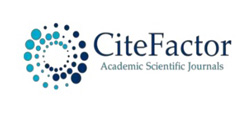Top Links
Journal of Nutrition and Health Sciences
ISSN: 2393-9060
Drinking Patterns and Fluid Intake in the Settings Workplace and University: A Systematic Review
Copyright: © 2018 Kaeding TS. This is an open-access article distributed under the terms of the Creative Commons Attribution License, which permits unrestricted use, distribution, and reproduction in any medium, provided the original author and source are credited.
Related article at Pubmed, Google Scholar
Introduction: The effect of an adequate fluid consumption is well-known and its relevance for the maintenance and promotion of health cannot be denied. Previous work indicates that daily demands and work exposures, i.e. related to stress, may have an impact on drinking patterns. To date, only few studies have investigated workers’ and students’ fluid consumption and drinking patterns, as well as their impact on different outcomes. However, a review that combines previous findings and current knowledge about workers’ and students’ likely fluid consumption has not been published yet. Therefore, we conducted a systematic literature review on drinking patterns in the settings workplace and university.
Method: With a combination of multiple keywords (“drinking patterns” (and synonyms), “university” and “workplace”) we systematically searched the electronic databases PubMed (MEDLINE), Embase and Scopus, respectively.
Results and Discussion: Twenty-four relevant articles were identified and included for further analysis. Overall, pure water was identified to be most likely consumed in both settings. Likewise, caffeinated beverages, such as coffee, energy drinks as well as soft drinks or tea and other drinks, such as dairy products and juice, were also identified as being consumed to some extent, although consumption patterns vary considerably. Whilst few studies indicate an adequate hydration status, others suggest a rather poor fluid intake. Facilitators were a supply of a variety of drinks and flavors, whereas stress, organizational barriers, inadequate knowledge, limited access and hygiene had adverse effects. These and other factors were likely to have an impact on drinking patterns.
Conclusion: The settings workplace and university were likely to influence the hydration of people present there positively as well as negatively. In order to further ensure and promote health in the settings workplace and university more research is needed and adjustments of prevailing conditions should be considered in practice.
Keywords: Drinking Patterns; Fluid Intake; Occupational Health; Workplace; University; StudentIntroduction
Water is the main component of the human body [1]. 50-60% of the body mass consists of water which is essential for several biological and physical processes, and hence, essential for the maintenance and promotion of individual health [1,2]. A fluid deficit of 2% already can lead to severe health dysfunctions [3]. To maintain an adequate fluid balance, the European Food Safety Agency (EFSA) recommends for women of average age to drink about 2.0l and men to consume 2.5l of water per day [1]. However, given the fact that the need of hydration depends on one’s consumption of water and on individual circumstances, recommendations are difficult to generalize, and therefore, should be considered as a rough guide only [1,4,5].
The phenomenon of unintended dehydration has already been assessed and described previously, suggesting that this is often associated with diverse stressors [3,6,7]. For instance, Evers (2009) reports that intense physical stress at work can unconsciously suppress any sensation of thirst. In addition, there is evidence to suggest that an appropriate consumption of fluid might not be achieved due to the given living and working surroundings [3]. This suggests that workers, and students, would have to face these and equal challenges throughout their work routines as well as the everyday student life. Nonetheless, the current state of scientific research regarding the consumption of diverse non-alcoholic drinks, i.e., tab or bottled water, coffee and energy drinks, just to name a few, suggests that access to these beverages still appears to be limited in these settings.
To address this issue, this paper combines results and findings of previous research that assessed workers’ and students’ drinking patterns and behaviors. Secondly, this analysis aims to identify and discuss possible conspicuous features as a basis for recommendations and therefrom to derive recommendations for implementation.
We conducted two separate search processes in August 2018. Two researchers searched for drinking patterns in the setting university and drinking patterns in the setting workplace parallel but independently. We searched the electronic databases PubMed (MEDLINE), Embase and Scopus using the following terms: “drinking behavior”, “university” and synonyms for both terms. For the second search we used terms based on the combination of the following key words: “drinking behavior”, “workplace” “employment” and “occupational health” and synonyms. In addition, the Boolean operator NOT in combination with the keywords “alcohol” OR “ethanol” was applied to exclude studies focusing on alcohol consumption.
This systematic review was performed in conformity with the PICO model for systematic literature analyses
We included only primary literature published as original articles written in English, German, Spanish, Italian or Dutch. Articles were excluded if they were reviews or meta-analyses, if they studied alcohol consumption, assessed beverage consumption anywhere but in the setting worksite or university, or surveyed students who still attend school. Furthermore, book chapters, letters to the editor, unpublished work and study protocols were also excluded from this review.
Two researchers screened the titles and abstracts of each study identified in the process simultaneously but independently. To ensure accuracy, results were double-checked, discussed and subsequently included unanimously. All available and potentially relevant articles were retrieved in full-text form. We finally included twenty-four papers fulfilling all selection criteria of the 1783 initially identified studies (Figure 1).
Some studies that allow for conclusions on overall fluid intake in the settings workplace and university have been identified (Table 1). For instance, Nevins and Sherman (2016) found that 62% of 119 interviewed American nursing students drink between three to eight cups of water per day, which equals an amount of 75ml to 2 liters. Likewise, 15.1% stated they aimed at a healthy drinking behavior [8]. A similar fluid intake was also identified by Rodriguez et al. (2015), indicating that 59.8% of Spanish students drink pure water throughout the day, whereas 69.3% reported drinking more than four cups of water (equals 1liter) per day. Moreover, according to the findings of Ojeda-Brito et al. (2015) Spanish female students reported a daily water intake of 1.67 liters, whereas male students reported drinking 1.7 liters on average. These drinking patterns do not meet the recommendations of the EFSA [9].
Jonnalagadda et al. (2001) report that of the athletes of a U.S. college football team 26% consume more than five cups of pure water per day, where as 52% drink three to five cups per day. 19% stated that they drank one or two cups of water on a daily basis, whereas one athlete stated that he did not drink any cups of water at all throughout the day, although the majority of the students stated that they knew about the importance of adequate and healthy hydration when being physically active [10]. Similar findings regarding student athletes’ good basic knowledge about adequate hydration could also be found in other research articles [11]. However, this indicates that good knowledge about hydration does not necessarily imply that healthy drinking patterns follow from that.
Besides a study of Ko et al. (2007) reveals that the fluid intake among 4841 Chinese workers is not adequate. 17% reported consuming approximately 0.75 liters of fluid by drinking and eating on a daily basis [12]. Likewise, Carter and Muller (2007) indicate that 74% of Australian mineworkers prefer to consume water rather than any other beverage, although they reported drinking 0.5 liters of water only throughout their working day. Asking about the main reasons, the researchers identified the taste of the tab water being available was usually rated as less drinkable than any bottled water. Therefore, the authors suggest that taste will override any profound knowledge regarding the importance of an adequate hydration due to the demands of working routines [13]. Moreover, findings of Nevins and Sherman indicate that overall fluid intake due to rising demands of clinical rotation leads to a decrease in water intake that averaged 2.44 glasses in U.S. nursing students [8]. The thesis that the conditions at the workplace are a barrier for achieving a good hydration is also supported by the research of Polkinghorne et al. (2013). In essence, 58% of the assessed Australian miners showed a strong dehydration status before, and 59% showed a strong dehydration status, as measured by the Urinary Specific Gravity (USG) lower than 1.020, after work [14]. Three out of eighty-three workers even showed a dehydration status classified as clinical dehydration (USG >1.030) [14]. Likewise, analyses revealed that across this population, the likelihood to leave work dehydrated was 2.6 times greater for workers who started their workday dehydrated, than for those who did not [14]. Most workers reported that pure water was the beverage most likely to be consumed. Hence, although having stated this and given the fact that they are exposed to high temperatures throughout their everyday work routines, 41.8% of them mentioned that they did not have reliable access to cool palatable water at their workplace. Furthermore, 10.9% suggested that minor schedule changes could lead to an increased fluid intake in general [14].
The assumption, that the working conditions and settings can have an impact on one’s drinking behavior, is also supported by Nygaard and Linder (1997). In essence, they found that 50% of assessed Canadian public-school teachers consciously tried to restrict fluid intake during their workday in order to inhibit the need of urinating during classes and breaks. Only 15.2% stated that going to the bathroom would not be a problem at other times than official breaks [15]. In total, 24.5% reported that they did not urinate or urinated approximately once throughout their workday
Furthermore, a recent study of Qian (2018) indicates that students’ fluid consumption, particularly of tab water, varies largely depending on the place of residence. In comparison to Macau (24.3%) and Hong Kong (24.76%), students in Singapore were less likely to consume bottled water (13.44%) – a difference in consumption which got even more significant when being asked about water consumption at campus only (Singapore: 12.5%; Macau: 37.14%; Hong Kong: 32.35%). Qian concludes that Singapore has a more reliable access to palatable tab water, also associated with fewer contaminations and a higher trust in safety and hygiene [16]. Moreover, De Francisco and Castelao (2010) found that 15.62% of assessed Spanish workers prefer bottled water at work, whereas 79.07% prefer bottled water compared to tab water at their homes (79.07%) [17]. Besides hygienic indicators, flavor and access, findings of Ward et al. (2009) suggest that drinking patterns also depend on one’s perceptions and beliefs concerning health issues [18]. For instance, the majority of members of a university sports center in Birmingham assumed that bottled water is healthier than tab water. However, this did not seem to have any significant impact on their drinking behavior.
Furthermore, research of Åstrøm und Rise (2001) reveals that among a surveyed sample of Norwegian citizens the consumption of mineral water is relatively small. This is also supported by a study among nursing students [8].
In terms of preferences regarding water of different type’s research is still scarce. The only study identified assessing preferences of either chilled water or water at ambient temperature was the study by Jung et al. (2007), whereas no significant different consumption behavior regarding the temperature could be found. Nonetheless, the findings suggest that providing beverages with several flavors may lead to an increased fluid intake in comparison to providing pure water alone [19].
Even though pure water has been reported to be consumed most prevalently among students and workers, unsurprisingly, fluid is also consumed with other beverages, which have also been assessed in previous work.
Many articles that have been identified in this search have also investigated consumption patterns of coffee. In essence, findings seem quite diverse. Students of different regions have been reported to drink coffee more or less regularly. 60.2% of students in Trinidad and Tobago stated that they drank coffee throughout the week [20]. Likewise, 83% of students in Puerto Rico reported that they consumed coffee, whereas Spanish students (31.4%) and Croatian students (30%) reported that it was more or less likely [21,22]. According to these findings of Valek et al. (2004) and Rios et al. (2013), coffee is reported to be the second most consumed caffeinated beverage. Mackus et al. (2016) assessed coffee consumption among a Dutch student population and found that 50.8% drank coffee in the previous Twenty-four hours. A study of Booyens et al. (1969), found that 50% of male Indian students reported that they drank coffee, whereas only 14% of the female students reported that they drank coffee, milk or tea for lunch. Furthermore, research regarding the coffee consumption among a working population indicates that 88% of Australian mine workers drink coffee during their working hours [13].
Moreover, some research assessed the amount of coffee and its related intake and content of caffeine, which is often underestimated as knowledge appears, rather limited [23]. A study of Ojeta-Brito et al. (2015) indicates that in a population of Spanish students the average caffeine intake was 171.86ml per day. A similar study that assessed this intake in a Croatian student population reports an average consumption of 62.8±59.8 milligram per day [22]. Likewise, in the occupational setting, Polkinghorne et al. (2013) report that 450ml of hot beverages, comprising coffee and tea, are consumed by Australian underground miners on an average workday.
Regarding the causes and reasons for coffee consumption in these settings, Rios et al. (2013) found that students are more likely to consume coffee when the level of stress increases and an improved alertness is desired. In addition, research indicates that drinking coffee among workers is associated with a temporary increase of cognitive performance due to an increased concentration [24].
Comprising all beverages that have a stimulating effect on the organism according to the manufacturer’s specification, evidence regarding the consumption of energy drinks could also be identified. For instance, 48.3% of Turkish students [25], 51.5% of Arabian students and 83% of students from Trinidad and Tobago reported having consumed energy drinks ever [20,26]. Further, according to Rios et al. (2013), 29% of students from Puerto Rico reported consuming energy drinks, whereas energy drink and/or soft drink consumption has been reported by 13.7% in a Spanish student population in a study of Rodriguez et al. (2015). Thus, a study by Galluci et al. (2016) indicates that 36.4% of students of an US-American university consumed energy drinks during the previous thirty days. In a study among Dutch students, it was reported that only 9.2% had consumed an energy drink over the previous 24 hours. Likewise, a study of Reid et al. (2014) indicates that 38% of a surveyed Caribbean student population frequently consumes energy drinks.
Additionally, few studies delivered a more detailed insight into the amount of the energy drink consumption on a daily basis. In essence, a study by Attila and Cakir (2011) found that 10.3% of Turkish students drank more than one can of energy drinks, whereas a study by Murad and Rafeeg (2016) observed that the majority of Saudi Arabian students consume energy drinks once or twice a week. Also, the research of Reid et al. (2014) indicates that in their assessed Caribbean student population five or more energy drinks were consumed on a monthly basis, while 79.6% reported that they did not consume more than one energy drink per lecture.
Regarding the reasons for this consumption, physically active students report that they consume energy drinks to feel more energetic and stronger in order to improve their mental focus and athletic performance. Less active students were more likely to consume energy drinks to compensate sleep deprivation [27]. However, a statistically significant difference in consumption between active and less active students could not be found. Furthermore, the comparatively large consumption of energy drinks among Arabian and Turkish students has been reported to be provoked by the flavor and the desire for an enhancement in performance. Besides, energy drinks are reported to be consumed especially during long car drives as well as to enhance concentration in general [9,26].
Also, students’ knowledge about and perceptions of the ingredients have been investigated in previous studies. Attila and Cakir (2011) found that more than half of the Turkish students (54.7%) consuming energy drinks had little knowledge on its contents. Furthermore, their findings indicate that students could also not differentiate sports drinks from energy drinks [25], which are also supported by the research of Mackus et al. (2016). In essence, Dutch students were found to overestimate the caffeine content of energy drinks [23]. Even though more than half of the students stated that they occasionally drank energy drinks, findings of the study by Murad and Rafeeg (2016) suggest that students attributed more negative than positive effects to caffeinated beverages. For instance, frequent urinating, palpitations, and sleeplessness were listed [26].
According to previous findings of Valek et al. (2004) and Rios et al. (2013), soft drinks are the most consumed caffeinated beverages among students in general. Whilst among Croatian students, 50% of their daily caffeine consumption can be referred to soft drinks; a study of Rios et al. (2013) reveals that Puerto Rican students get 87% of their caffeine intake from soft drinks. However, a study by Rodriguez et al. (2015) reveals that soft drinks as well as energy drink consumption does not seem very prevalent among Spanish university students. In essence, they found out that only 13.7% consume soft drinks or energy drinks [21]. Findings by Ojeda-Brito (2015) reveal that Spanish students consume 155.10 milliliters of soft drinks per day. According to Ko et al. (2007), 15.1% of assessed Chinese workers consume more than 500ml of sugary drinks, whereas the majority preferred soft drinks.
Besides, a study of Peltzer et al. (2013) investigated risk factors for prehypertension among students from Indonesia, Laos, Malaysia, Myanmar, Philippines, Thailand and Vietnam and found a significant interaction with soft drink consumption
In sum, (increased) soft drink consumption can be connected with an increase of stress [28]. Additionally, caffeinated soft drinks are reported to be mostly consumed by students who wish to stay awake longer [28].
Juice consumption in the settings workplace and university does not seem to have been assessed extensively. One study that surveyed a Spanish student population suggests that 202.17 milliliters of juice is being consumed on a daily basis [9].
Many of the identified studies did not assess tea and coffee consumption separately. However, research of Mackus et al. (2016) indicates that 34.8% of caffeinated beverage consumption can be attributed to tea. In comparison, other studies, i. e. by Rios et al. (2013), indicate slightly higher caffeine consumption than that of tea, namely 40%. Similar findings can also be seen in the work of Reid et al. (2014).
Evidence from Valek et al. (2004) and Rios et al. (2013) indicates that 13% of Croatian students and 56% of Puerto Rican students are likely to consume hot chocolate throughout their daily campus life [22,28]. According to Mackus et al. (2016), 0.5% of Dutch students who consume caffeinated beverages drink hot chocolate, too. Findings of Ojeda-Brito et al. (2015) reveal that the average of Spanish students drinks 341.38ml of milk per day. Polkinghorne et al. (2013) report that among Australian mineworkers, 250ml of milk is being consumed.
Scientific evidence regarding drinking patterns and fluid intake among workers as well as among university students has not been assessed extensively and the results are quite heterogeneous. However, research available to date suggests that water is the most likely to be consumed beverage at the workplace as well as in university settings, even though results indicate that fluid intake is often inadequate. Considering the European Food Safety Agency recommending 2-2.5l per day to keep a healthy fluid balance [1], findings provide compelling evidence to suggest that this is often not achieved at worksite and university settings.
Overall, fluid is also commonly derived from soft drinks and coffee, as reported by students and workers [13,20-23,28,29]. Furthermore, findings could indicate that fluid intake largely depends on the availability of palatable tab water, but high-quality trials appear to be scarce. Besides, drinking patterns seem to vary largely from study to study, country to country or city to city, which might depend on differences in the access to palatable water, as indicated by Qian (2018). Hence, not only in terms of pure water, but also in terms of energy drinks and coffee, findings indicate regional differences in drinking patterns. For instance, energy drink consumption was comparatively lower among Spanish students than compared to Puerto Rican students [21,28]. Further, coffee consumption was especially high among the assessed Dutch, Puerto Rican, Indian and Australian populations in comparison to Spanish and Croatian students [21,22]. Cultural differences and habits regarding nutrition could also play a key role. According to Nordbeck (2013) and the Unicef (2018), the average availability of high-quality drinking water in Europe, North America, North Asia and Australia is considered to be comparatively good [11,30]. In contrast, Africa, regions in South America and South Asia are less likely to have reliable access to potable water. Besides, data from 2017 indicate that 2.1 million people worldwide, namely three out of ten people, do not have access to palatable drinking water [31]. Although a corporate as well as a university setting may already be seen as indicating a better socio-economic status and more reliable access to certain resources than others may, it is not surprising that drinking patterns vary among the assessed populations. However, as no standardized units were used for data collection, which makes the comparison of results difficult, and given the fact that every study took place in another region of a different culture, generalizations concerning drinking patterns should be taken with caution. Further, this emphasizes the relevance of follow-up studies, as well as the importance of future research that should consider providing more precise and standardized data allowing direct comparisons. episodic drinking [32]. Alcohol intake can impair cognition, perception and behavior, as previously described by Kummer et al. (2016) while affecting safety, productivity, working relationships, and absenteeism [33,34]. As these are possible contributors to the water consumption pattern, the dismissed assessment of alcohol intake must be considered a possible limitation of our analysis.
Other limitations of previous work, possibly affecting this review, could be attributed to the methodology used by most researchers. As the majority of data is based on interviews, this already indicates a certain degree of subjectivity and a possible recall and response bias. It cannot be ruled out that answers follow the concept of social desirability, and therefore, one could expect a surveyed person’s reporting drinking behavior slightly whitewashed to fit healthier patterns and conforming more to common social values [35].
Nonetheless, previous evidence makes practical recommendations possible. Research that identified restrictions in drinking patterns suggests that a lack of access to palatable, tasty drinking water is one of the biggest barriers. Moreover, a few studies provide evidence suggesting that organizational barriers and restrictions also have an impact on fluid intake and drinking patterns. In essence, an increased workload or the badly organized structure of workday and breaks are told to have negative effects on adequate hydration [8,14]. This is particularly supported by the research of Nygaard and Linder (1997), showing that some teachers consciously tried to drink less throughout their workday, so that they were not required to use the bathrooms too often [15]. Therefore, access to palatable drinking water should be ensured and perhaps a reconsideration of rosters and small differences on organizational levels that predefine daily routines could already lead to an increase in fluid intake in the settings workplace and university. However, the individual self-responsibility for one’s health should be promoted besides addressing solutions to face possible barriers.
Since current as well as past studies have been reviewed, this study’s results on possible barriers and conditions might already differ concerning assessment dates. For instance, as pointed out by Chu et al. (2000) and Hymel et al. (2011), the development of workplace health promotion underwent an evolutionary process since the 1970s, also implying a shift towards increasingly taking environmental, social and organizational determinants of health into account [36,37]. Due to the increased establishment of schemes and interventions in health protection and promotion on community and occupational level, one could assume that restrictions on the organizational level are less common to date. However, the work of Polkinghorne et al. (2013) and Nevins and Sherman (2016) show these still to be of concern.
In addition, the research of Jung et al. (2007) leads to the suggestion that providing beverages of several flavors as well as carbonated or still tab water might help to meet everyone’s preferences and could lead to an increase of fluid intake [19]. This could improve concentration and productivity in these settings and is also considered to be a health promotion strategy which possibly leads to a decrease of risk factors for several chronic diseases [12].
Furthermore, what is currently known about the impact of certain ingredients, especially of energy drinks, should be elucidated. Future research should consider assessing diverse drinks likely to be consumed at the workplace and at universities on different impacts. Particularly, findings indicate that more education on differentiating between energy drinks and sports drinks, as well as their impact on (de-)hydration might be necessary [25]. As research in the field of drinking patterns in the settings workplace and university is still scarce, it would be interesting to further investigate these in terms of the needs, preferences and availability as well as presumed barriers for adequate fluid intake among various industries. Future research should consider implementing randomized-controlled trials when assessing the consumption of fluids to allow a higher informative value as well as to enable more systematic and reliable conclusions [38,39].
This review provides an overview on evidence in the field of fluid intake and drinking patterns in the settings worksite and university. Our findings point out that there is a need to investigate the complexity of potentially influencing factors of an adequate fluid intake, as we identified fluid supply to be mostly inadequate among the investigated student and working populations, which was due to inadequate knowledge, limited access of palatable and favorable drinks as well as restrictions due to organizational barriers. Likewise, our work suggests strategies for possible improvements on a practical level that aim at further ensuring and promoting health in these settings [440]. In essence, we recommend informing about adequate fluid intake and its relevance especially at workplaces with rising demands, and most importantly, to ensure access to palatable water, either chilled, ambient, flavored, aerated or non-aerated, at various locations. Moreover, to achieve a maximum benefit, evidence suggests that flexible working practices and the possibility of breaks will have a positive impact on hydration. Nonetheless, future research is needed to further broaden the scope of evidence concerning possible barriers and facilitators for general fluid intake and adequate hydration.
 |
| Figure 1: Fat-lean judgment chart based on change of BMI with age |
Elementary school (N=4740) |
Junior high school (N=4740) |
||||||||
Author(s) |
Subjects |
Measurement Variables |
Survey/Method |
Results |
|||||
Åstrøm & Rise 2001 [37] |
735 |
Soda intake |
Questionnaire |
1-2x/week consumed by 63% of subjects |
|||||
Attila & Cakir 2011 [25] |
439 |
Energy drink consumption |
Questionnaire |
Ever drank an energy drink: 48.3% More than one bottle/day: 10.3% |
|||||
Author(s) |
Subjects |
Measurement Variables |
Survey/Method |
Results |
Booyens et al. 1969 [29] |
838 |
Dietary patterns during the university term |
Questionnaire: |
50% of male students drink coffee, 14% of female students either drink coffee, milk or tea for lunch |
Carter & Muller 2007 [13] |
229 |
Knowledge on hydration, perceptions, hydration status, needs, taste |
Questionnaire |
88% consume coffee; 95% perceive their usual fluid intake as adequate, consuming 2x250ml of water/day, 74% prefer water for rehydration |
De Francisco & Castelao 2010 [17] |
6508 |
Liquid consumption and related variables |
Questionnaire |
bottled water preferred at home: 79.07%, at work: 15.61% 50% of the population is well hydrated |
Galluci et al. 2016 [27] |
692 |
Energy drink consumption in athletes and non-athlete students |
Questionnaire |
36.4% consume energy drinks |
Jonnalagadda et al. 2001 [10] |
31 |
Dietary practices, attitudes, physiological status |
Questionnaire |
n=4 considered sports drinks as more rehydrating than water 26% reported to consume 5 cups, 52%: 3-5 cups, 19%: 1-2 cups and 3% (n=1): reported not to consume any fluid during workout |
Jung et al. 2007 [19] |
10 |
Consumption of water, coke, etc. |
Intervention: chilled water (5-10°C) vs. |
No sign. difference in volume of beverage consumption between chilled water and flavored ambient temperature drinks |
Ko et al. 2007 [15] |
4841 |
Patterns of dietary habits, fluid intake |
Questionnaire |
17%: 750ml of fluid per day (water, juice or soup) 15.1% sugar drinks (more than 500ml per day) |
Mackus et al. 2016 [23] |
757 |
Knowledge on caffeine content |
Questionnaire |
Most prevalent sources of caffeine: coffee (50.8%), tea (34.8%), chocolate milk (0.5%) |
Murad & Rafeeg 2016 [26] |
548 |
Energy drink consumption |
Questionnaire |
51.5% consume energy drinks, whereas 82% reported more harms than benefits |
Nevins & Sherman 2016 [8] |
119 |
diet, fluid intake, health goals |
Questionnaire |
15.1% set adequate fluid intake as a health goal 62% reported consuming water (3-8 glasses/day), low |
Nichols et al. 2005 [38] |
171 |
Knowledge on hydration, fluid intake |
Questionnaire |
Limited knowledge on correct use of sports drinks, good basic knowledge on adequate hydration |
Nygaard & Linder 1997 [15] |
791 |
Fluid intake and voiding patterns |
Questionnaire |
24,5% infrequent voiding (never or only once), 50% drank less on purpose to decrease voiding at work |
Ojeda-Brito et al. 2015 [9] |
1978 |
Water, milk, juice, coffee, tea, soft drinks |
Questionnaire |
Daily fluid intake: 1673.6ml (women), 1701.8ml (men); water (886.22ml/day), juice (202.17ml /day), coffee and tea (171,86ml/day), Soft drinks (155,10 ml/day) |
Peltzer et al. 2017 [39] |
4649 |
Risk factors for prehypertension |
Questionnaire |
A significant interaction between soft drink consumption and prehypertension was found in students |
Polkinghorne et al. 2013 [14] |
88 |
Fluid intake and hydration status (urine specific gravity) at work |
Questionnaire |
Before work: 59% dehydrated before (USG > 1.020), 58% dehydrated after work; |
Qian 2018 [16] |
406 |
Water (bottled and tab water) intake |
Questionnaire |
Consumption of bottled water: |
Reid et al. 2014 [20] |
1994 |
Drinking patterns of energy drinks, coffee, tea |
Questionnaire |
86.2% ever consumed an energy drink |
Author(s) |
Subjects |
Measurement Variables |
Survey/Method |
Results |
|||||||||
Rios et al. 2013 [28] |
275 |
soft drink, coffee, hot chocolate, tea, energy drink consumption |
Questionnaire |
88.3% consume caffeinated beverages, 87.0%: soft drinks, 83.0%: |
|||||||||
Rodriguez et al. 2015 [21] |
102 |
water, soft drinks, coffee, tea, milk intake |
Questionnaire |
59.8% drink water on a daily basis; 69.3% of them drink 4-8 cups, soft drinks or energy drinks (13.7%), milk (76.5%), coffee (31.4%) or a soft drink (89.2%) |
|||||||||
Smith 2005 [24] |
110 |
Caffeine consumption |
Questionnaire |
All: regular caffeine consumers (250mg/day) |
|||||||||
Valek et al. 2004 [22] |
571 |
Soft drinks, coffee, chocolate |
Questionnaire |
30% drink coffee, 40%: soft drinks, 78%: chocolate |
|||||||||
Ward et al. 2009 [18] |
23 |
bottled and tab water |
Questionnaire |
Perception that bottled water had health benefits over tab water |
|||||||||
Table 1: Overview of all studies identified in the systematic literature review |
|||||||||||||






































